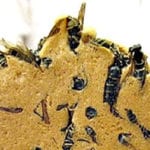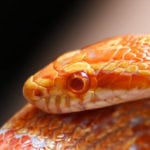 Technology
Technology  Technology
Technology  Humans
Humans 10 Everyday Human Behaviors That Are Actually Survival Instincts
 Animals
Animals 10 Animals That Humiliated and Harmed Historical Leaders
 History
History 10 Most Influential Protests in Modern History
 Creepy
Creepy 10 More Representations of Death from Myth, Legend, and Folktale
 Technology
Technology 10 Scientific Breakthroughs of 2025 That’ll Change Everything
 Our World
Our World 10 Ways Icelandic Culture Makes Other Countries Look Boring
 Misconceptions
Misconceptions 10 Common Misconceptions About the Victorian Era
 Mysteries
Mysteries 10 Strange Unexplained Mysteries of 2025
 Miscellaneous
Miscellaneous 10 of History’s Most Bell-Ringing Finishing Moves
 Technology
Technology Top 10 Everyday Tech Buzzwords That Hide a Darker Past
 Humans
Humans 10 Everyday Human Behaviors That Are Actually Survival Instincts
 Animals
Animals 10 Animals That Humiliated and Harmed Historical Leaders
Who's Behind Listverse?

Jamie Frater
Head Editor
Jamie founded Listverse due to an insatiable desire to share fascinating, obscure, and bizarre facts. He has been a guest speaker on numerous national radio and television stations and is a five time published author.
More About Us History
History 10 Most Influential Protests in Modern History
 Creepy
Creepy 10 More Representations of Death from Myth, Legend, and Folktale
 Technology
Technology 10 Scientific Breakthroughs of 2025 That’ll Change Everything
 Our World
Our World 10 Ways Icelandic Culture Makes Other Countries Look Boring
 Misconceptions
Misconceptions 10 Common Misconceptions About the Victorian Era
 Mysteries
Mysteries 10 Strange Unexplained Mysteries of 2025
 Miscellaneous
Miscellaneous 10 of History’s Most Bell-Ringing Finishing Moves
10 Animals That Use Bizarre Methods To Kill Their Prey
From time to time, YouTube videos of animals hunting prey in incredible ways pop up and go viral. Usually they’re one-off random events but there’s a long list of unknown and unusual methods that animals use frequently as their method for hunting.
As the saying goes, it’s a jungle out there. You also hear it’s survival of the fittest, but sometimes those which aren’t the fittest adapt and get crafty.
10 Times Wild Animals Saved Humans
10 Komodo dragon
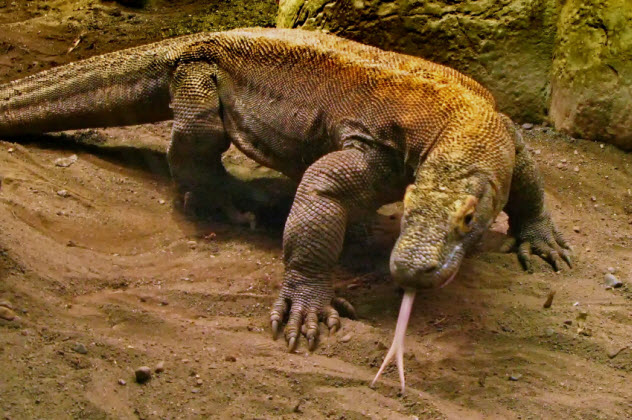
These beasts, sometimes called ‘land crocodiles’, are the largest living lizards on earth, growing up to 3m long and weighing up to 70 kilograms. They are carnivores and have been known to have fatal encounters with humans, but don’t worry they’re largely restricted to a few remote islands in Indonesia, including Komodo (which is essentially a national park) hence the name.
Komodos hunt in packs but their method of killing is to charge their prey and attack their underside or throat with their sharp claws and serrated teeth, causing rapid blood loss or fatal lacerations. However, an initial Komodo charge may not always finish the job, instead severely wounding the prey, before the dragon proceeds to tear flesh off its grounded victim and eat them alive.
There’s also a theory their teeth contain venom to make matters worse for unfortunate prey.[1]
9 Golden eagles
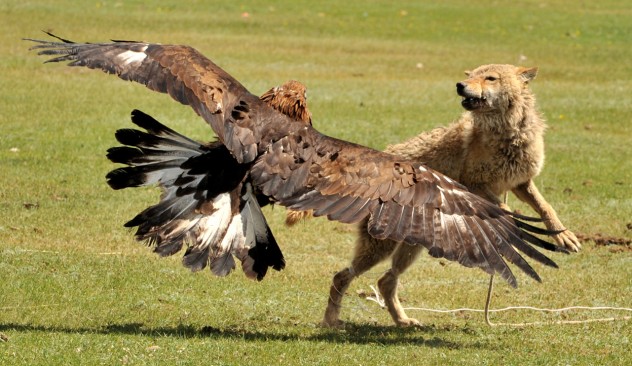
These birds of prey have a wide variety of diet, including squirrels, grouse, pheasants, reptiles and small birds, but they’ve become well known for their attacks on deer. These dark brown Northern Hemisphere eagles have powerful feet and sharp talons which enables them to swoop in from above and grab indefensive prey.
However, golden eagles went viral on Youtube after shocking videos emerged of them swooping on goats on the edge of cliffs, before picking them up and dropping them deliberately from a distance into the rocks below to kill them. The Golden eagles will then feed on the carcass of the dead goat. Given the weight of goats, sometimes more than 100 kilograms or 250 pounds, catching them and picking them up mid-flight is no easy feat. Eagles are opportunistic feeders but this is taking it to the next level.[2]
8 Electric eel
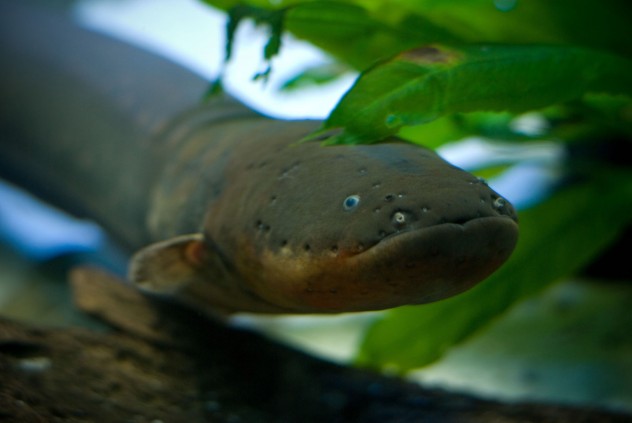
There’s very few animals like electric eels when it comes to the way they hunt, utilizing their unusual electric charge to stun their prey. Electric eels usually inhabit dark and murky waters too, so their shock power can literally shock unsuspecting victims who become a meal within seconds.
An electric eel’s diet is carnivorous typically consisting of fish, crustaceans, insects and small vertebrates, like amphibians and reptiles. The eel uses its shock power or defence but also to hunt.
The eel’s motion sensitive hairs on its body detect any pressure change in the dark water, which triggers a doublet, which is two rapid electric pulses that hit the prey’s muscles, stunning them and eventually paralysing them, allowing the eel to consume it.[3]
7 Deinopidae
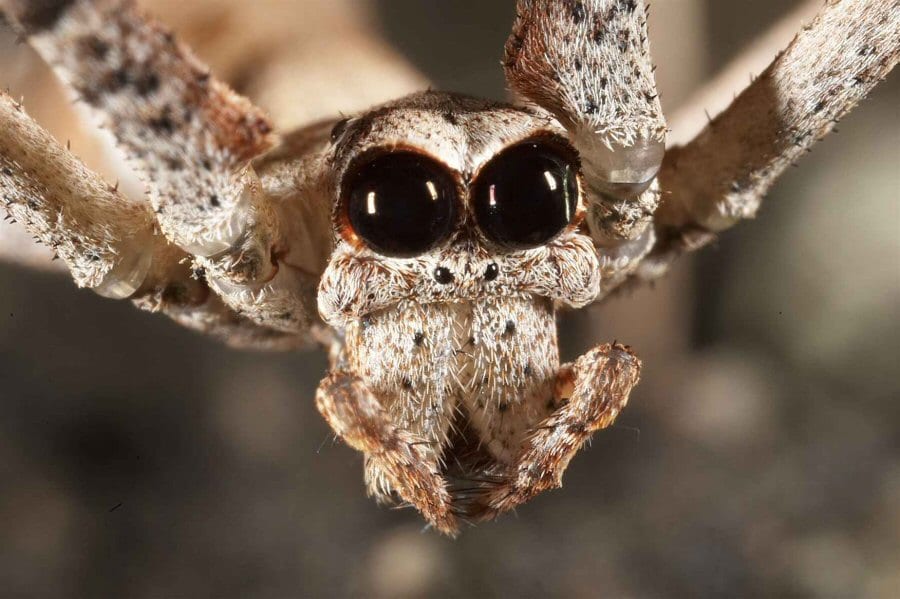
These arachnids are commonly known as net casting spiders, which articulately explains their unique hunting technique to catch unsuspecting prey. Found in the tropics in Australia, Africa and the Americas, net casting spiders are hunters after dark, utilizing their exceptional vision from their huge eyes to spot prey – typically ants, moths, crickets or beetles—before casting their net over the victim in a lightning-quick movement.
The spider makes the net out of its own silk, sometimes three times its own size. It typically sets a faeces trap as a target point, before waiting in earnest for a victim to approach. At that moment, with its ogre-faced eyes ready for any movement, it entangles its prey at incredible speed with its net before biting and consuming them.[4]
6 Frogfish
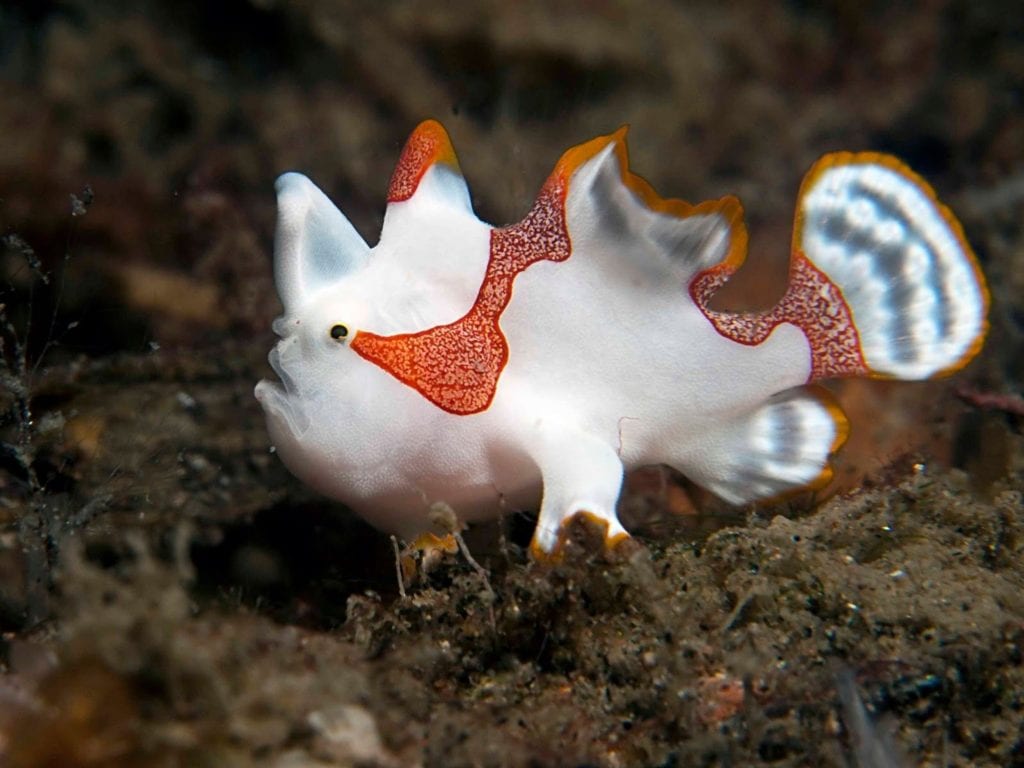
These anglerfish are super ugly and they’re also poor swimmers who typically remain on the ocean floor, but they’re highly effective hunters. Their unusual look is designed to help catch prey, with a combination of camouflage and mimicry. Once they lure in a victim, they strike a lightning speed, as little as 6 milliseconds (the reaction time for most humans is 200 milliseconds).
Frogfish are covered in spinules which help camouflage while some can change colour to blend in. Their technique to catch their prey doesn’t involve them moving, rather luring in victims with strange-looking appendages that are effectively bait. The appendages, which often look like worms, wiggle around when a victim approaches, luring it closer, before the frogfish strikes just as the prey is within grasp with its rapid ambush. The frogfish has a huge wide mouth which suddenly opens and engulfs the victim and a special muscle in the esophagus that ensures the prey cannot escape as its swallowed. Frogfish can swallow animals twice its size.[5]
Top 10 Animals That People Eat Alive
5 Secretary birds
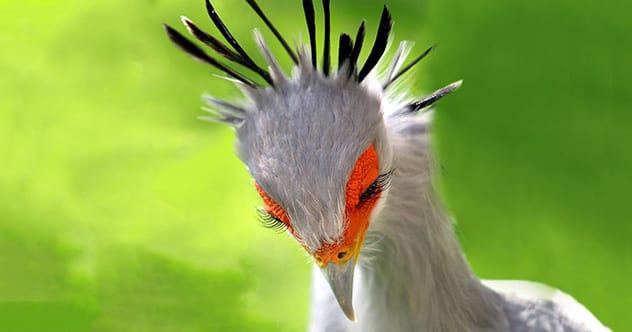
No, don’t be fooled by the name, there’s birds are tough and ruthless. It is a bird of prey but unusually it hunts terrestrially, meaning on land, as opposed to flying in from the air. The weapon of choice for secretary birds – who prefer to hunt in pairs—is their feet, as they kill their prey by kicking or stomping it to death. The secretary bird cases prey during the cooler parts of the day, eventually stomping on vegetation to flush them out before their stomping attack.
Native to Africa, secretary birds’ prey consists of insects such as locusts and beetles but also mammals such as mice, hares and mongoose. It’s also claimed that secretary birds sometimes kill snakes, such as cobras with their persistent stomps to the head to kill or immobilize. Secretary bird’s scientific name, Sagittarius serpentarius, translates to ‘the archer of snakes’. When they attack, they spread their wings and raise their feathered crest in a grandiose display of power and intimidation but also distraction, as a snake bite on the feathers won’t hurt the bird given the lack of flesh.[6]
4 Margay
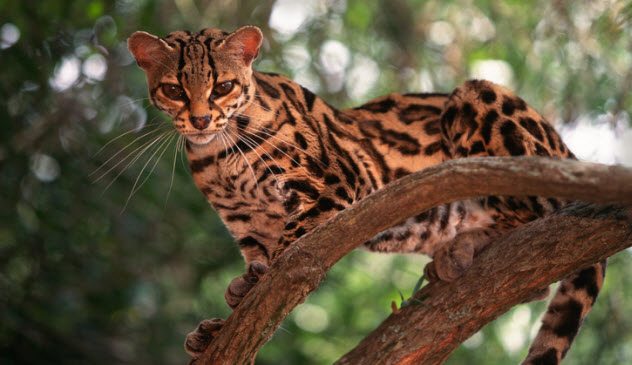
This solitary and nocturnal small cat, which is native to South and Central America, employs the rare technique of mimicry to lure its prey. The margay hunts small mammals, such as monkeys and squirrels, as well as birds, eggs, lizards and tree frogs while it’s also known to be vegetarian at times.
The margay has been known to vocalise the infant cries of monkeys such as wild pied tamarins. The premise of the vocalization is to attract prey, thus facilitating an attack and reducing the energy expended on the pursuit, improving the margay’s chances of success.[7]
3 Archer fish
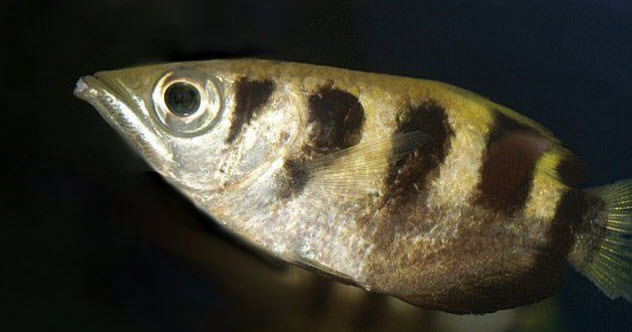
We all played with a ‘super soaker’ water pistol when we were young, but the archer fish took the concept to the next level, by making that its mode of hunting. Archer fish float near the surface and shoot land-based insects from a few metres away with their deadly combination of pinpoint aim and power with water from their mouths. If at first they miss, they are persistent and can actually shot seven streams of water from their mouth at one time.
The archer fish’s name comes from this technique, reflecting their ability to spit an ‘arch’ of water at its prey and they are sharp shooters at that. Found in brackish water habitats, largely in mangroves and estuaries in South East Asia and Northern Australia, archer fish can leap out of the water to attack if their shot doesn’t effectively bring down their prey.
With all this in mind, they’re one of very few animals to utilize tools around them—the water—to hunt.[8]
2 Glowworms
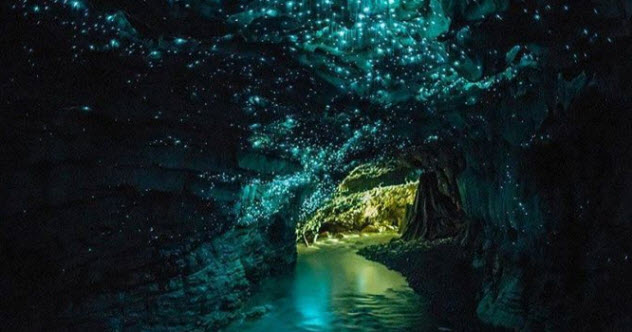
These illuminated larvae may be pretty on the eye and utilized as a tourist attraction in some parts of New Zealand, but their glow is actually their hunting technique. Glowworms glow through bioluminescence, which is essentially the emission of light generated by a chemical reaction. But the glow is made to draw insects to them. Any insects that get too close to the light get trapped by the glowworms’ large sticky webs found in caves and overhangs where they reside in clusters.
Therefore caves, which are dark and moist, are the perfect hunting ground for glowworms, so they’re usually the best place to find glowworms in action. They may appear to look like worms, but they’re actually beetles or gnats.[9]
1 Bottlenose dolphins

These sophisticated mammals are even more clever than the TV show ‘Flipper’ let on. The dolphins work as a team when hunting, but one of the strangest techniques they employ is by creating ‘mud nets’ which causes their prey, fish, to jump out of the water and into their waiting mouths.
A dolphin hits the ocean floor with its tails as it swims to stir up the mud on the sea bed and create plumes in the water, before swimming in a circle around a school to fish to create a whirlpooling ring of mud. As a result, the trapped fish try to escape the ring by jumping out of the water, where the dolphins have parked themselves with their mouths wide open awaiting their feed, as captured by BBC Earth.
Bottlenose dolphins have plenty of other hunting techniques including fish whacking and strand feeding, but their mud-ring feeding technique is a highly intelligent strategy.[10]
Top 10 Surreal Animals That Really Exist
About The Author: I am a Media/Communications professional and long-time Australian freelance journalist, having written for global publications including AAP, Sunday Times, FourFourTwo and many more. Follow me on Twitter @BenSomerford
